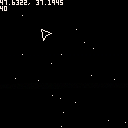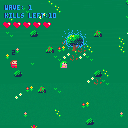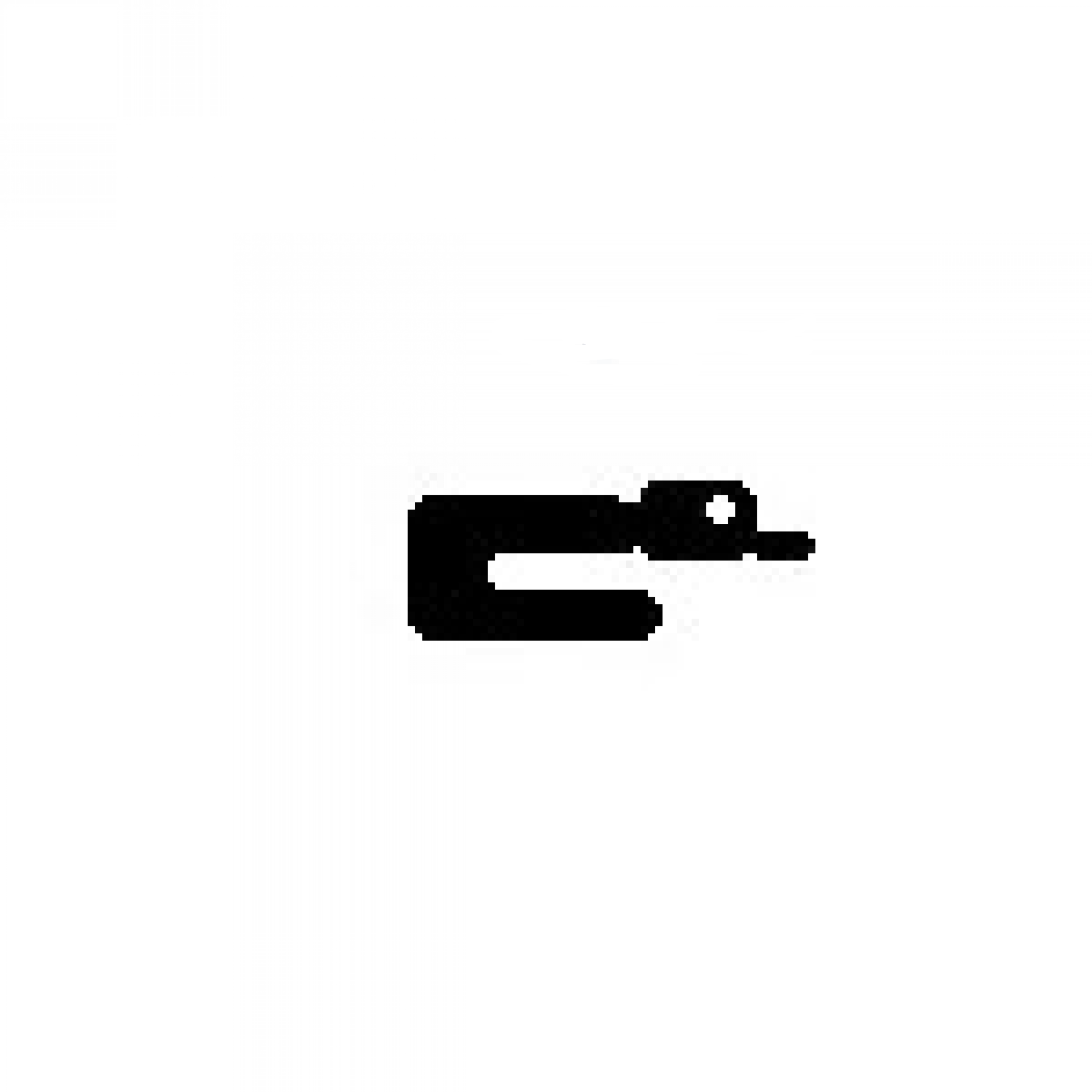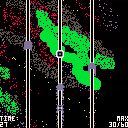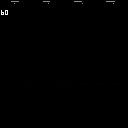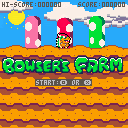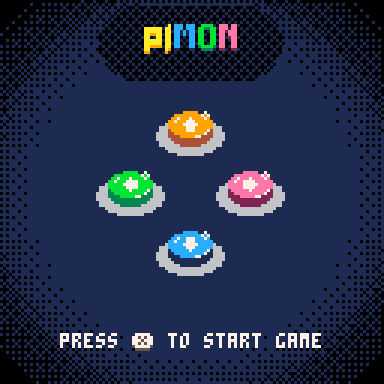
Pimon is inspired by the traditional simon game. I implemented a pico-8 version of this classical game to train my brain.
Rules
Pimon plays at first two tones. After that you have to repeat this tones in the correct order. If your are correct pimon will repeat the tones and add one more. Now you have to repeat it again and again ...
If you repeat 4 times the correct tones you get a live up. This allows you once to type in an incorrect answer. After that pimon will repeat the latest tones.
Controls
Start the game with hitting the x-button. As long as pimon plays you can not hit the tone-buttons. On your turn you use the arrow buttons to play the tones.

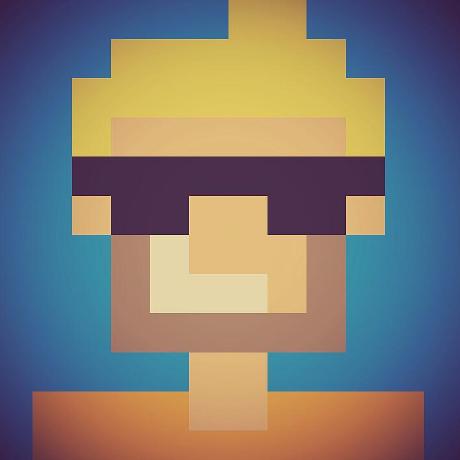

A little game about diving around as a bird.
Despite being quite broken, hard, and in general, not fun, I hope you enjoy.
I think this game would've been a lot more fun if I understood compression and curved collision better. This game could have really benefited from an open world map so that it could go in more directions instead of from left to right. Curved collision would have just made it a lot easier to not get stuck on corners. I might try making this again in a game engine or graphics library.
MineStorm Pico
Tread lightly! The transport lanes of intergalactic space have been seeded with mines from an alien vessel.
Use your mine destroying blaster to blow up the mines before they annihilate you! You may survive the floating mines, but beware of the fireball, magnetic, and treacherous fireball-magnetic mines!
. . . many fields, each one more difficult, await you!
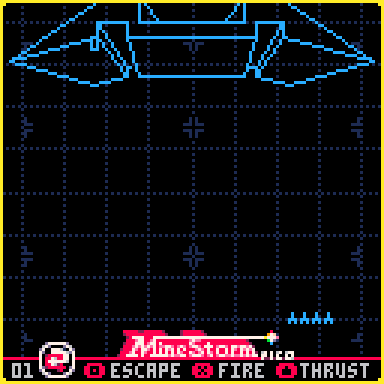
Enemy minelayer in action
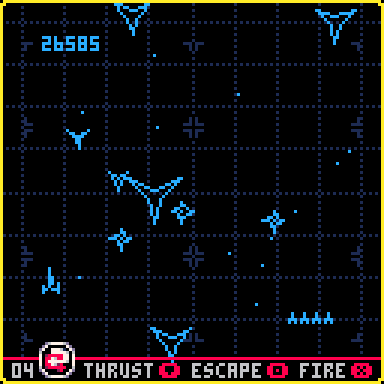
Clearing a mine field
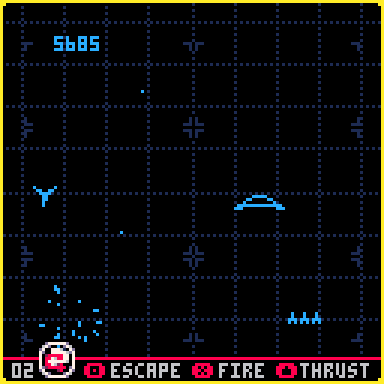
Duel with the minelayer
Controls







A minimalist grid-based puzzle game where you score is the number of times you had to restart on your way through the ten progressively more difficult puzzles.
I used the simple puzzle "engine" from my other, kid-friendly, puzzle game "TED" to create a more interesting version for adults. It's still relatively simple in scope, and is fairly short. The last few puzzles should at least get you scratching your head a few times though!



A really simple puzzle game I made for my kids, they're both under 5 and are just getting into games so I decided to make a game starring their stuffed toys.
You play as a Green Teddy trying to find his pal the Red Teddy - navigate the house collecting candy, unlocking baby gates, and more!
The game really only had two design goals:
-
Be playable by the least dextrous human beings I've ever met (there should be no need for any sort of timing or precision to play because they have neither!)
- Not allow for any unwinnable situations - all the puzzles can be solved either by thinking through or just trial and error as you work through it, but there's never any "mistakes".
From that perspective it was a huge success. My target audience loved the game and play it all the time.
For most people it's not really a "game", but if you have kids and want something super simple for them to have a try at then here you go :-)

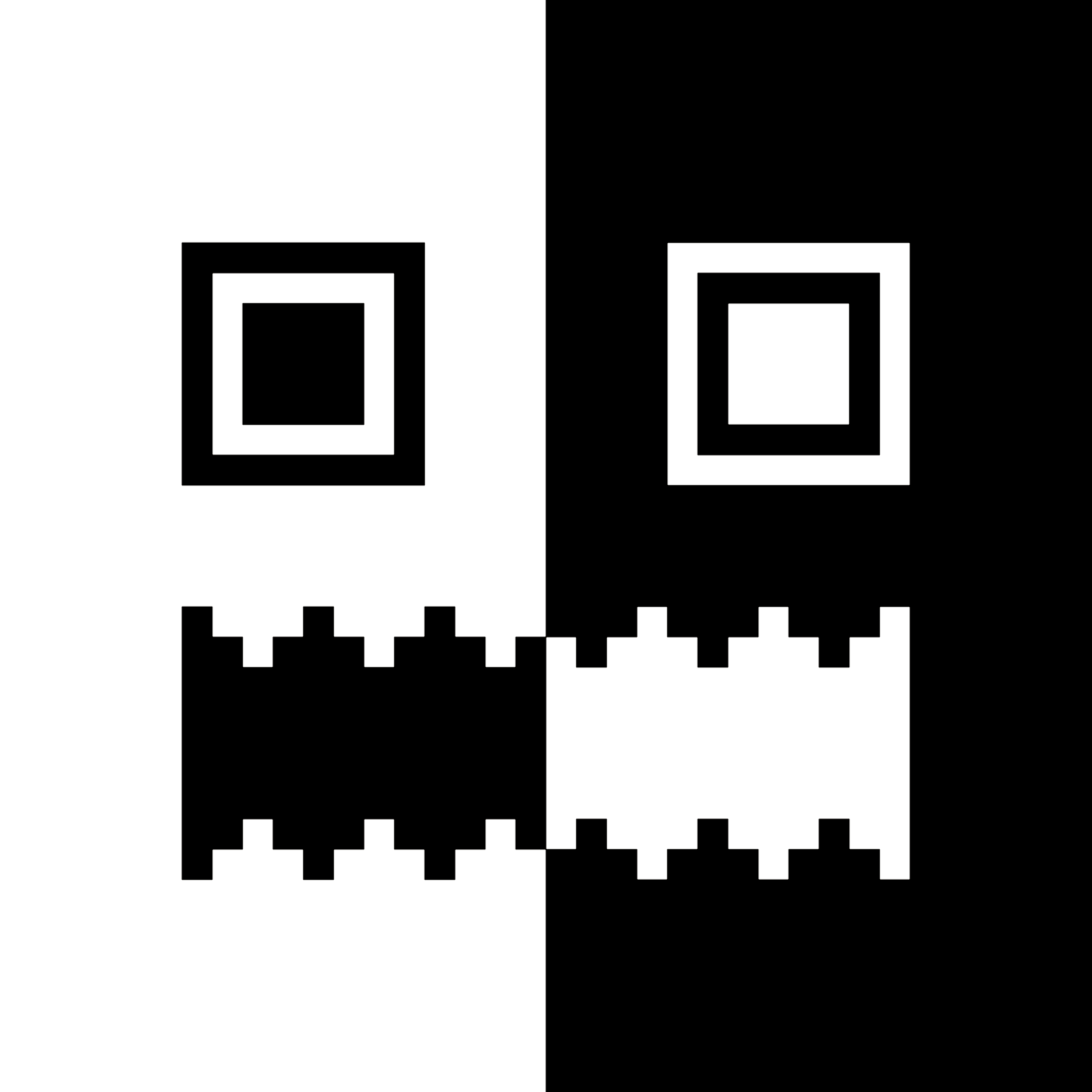
So I've created this code to make walking animations:
if plr.walking then
if time()-plr.anim>.1 then
plr.anim=time()
plr.sp+=1
if plr.sp>5 then
plr.sp=2 |
also added this for idle sprite:
if not plr.walking then plr.sp=1 |
However I can't figure out a way to change the sprite to the upward/downward movement sprites (spr 6-9, sprite 10-13) without having the code overwirte the plr.sp eachframe
if plr.upmove then plr.sp=6 #Do anim function |
as far as I've gotten is making the sprite change to the correct movement sprite and then have it iterate back to the idle animation or animate to the very next frame and revert back to the first forward sprite

JET PIG ADVENTURE
A game about a Pig and his Rocket. Refuel your spaceship, avoid enemies and collect the four space stars in each quadrant of the pig universe. This is a sequel to the original Jet Pig game.
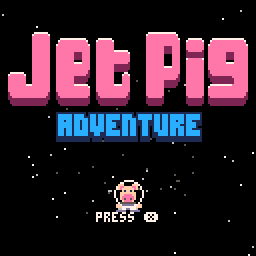
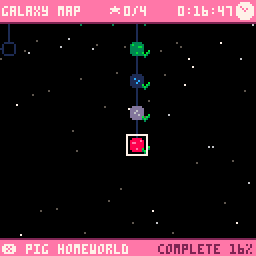
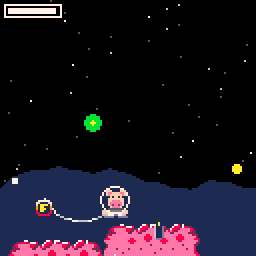
Features
- Galaxy map
- Over 50 planets
- Generated planet and mission names
Controls
- Move: Cursor keys
- X: Accept/Use Jet Pack
Credits
- Code & Music: Mani
- Gfx: Mani,Romeo
- Playtesting: Stella, Romeo

First of all, I'm a pico 8 noob so don't judge. If anyone wants to help out I'd love it and I thought I'd just share what I have so far. In case the title wasn't obvious I'm trying to recreate the ruins of undertake.
UPDATE#1
I added more to the ruins, signs that you can interact with by pressing x to open and z to close, and added flowies theme to his little fight.
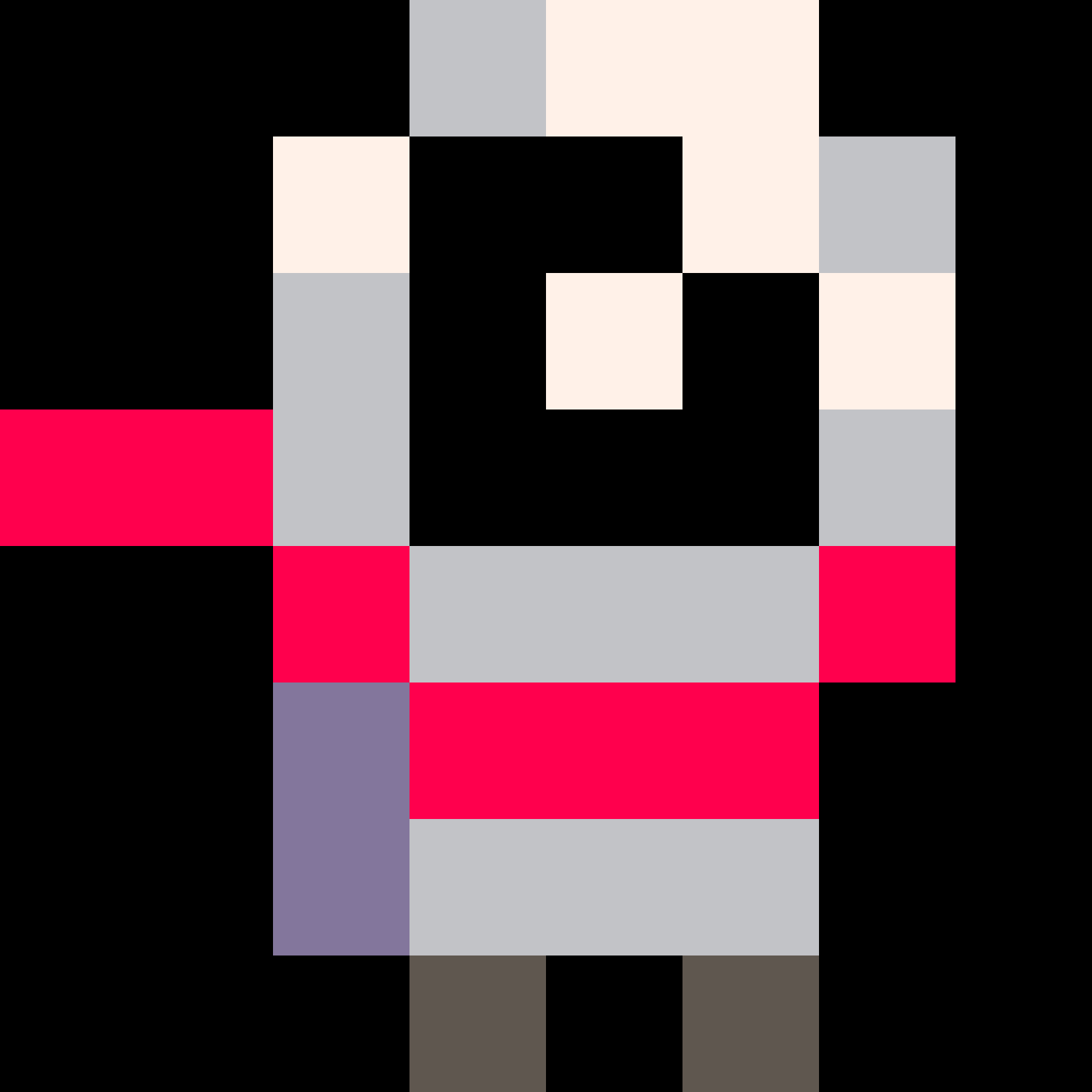
The javascript for multicart HTML exports look like this:
var _cartname=[`title.p8`, `level1.p8`, `level2.p8`, `level3.p8`]; var _cdpos=0; var iii=0; var ciii=0; var _cartdat=[204,204,204,204,204...] |
All the carts are stored in the _cartdat array. How is each cart stored in that array? Is it a fixed number of bytes, or some other method? E.g. some kind of end marker indicating the end of a cart?
Add an instant replay to your game!
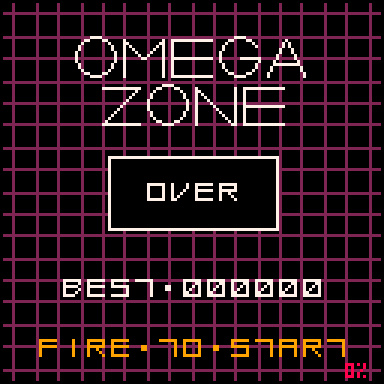
(Shown here: OMEGA ZONE by @kometbomb)
New from the mind that brought you Instant 3D! and still hasn't apologized, Instant Replays!
Paste this snippet into the end of your game and be amazed at your new replay capabilities!!! Or it could fail completely! That's the mystery of it!!!
do
local prev={
_update=_update,
_update60=_update60,
_draw=_draw,
btn=btn,
btnp=btnp
}
local bstate,pstate,addr,isplay={},{},0x8000,false
local function updatebtns()
for i=0,5 do
pstate[i]=bstate[i]
end
if isplay then
local mask=peek(addr) addr+=1
if(mask==0xff)run()
for i=0,5 do
bstate[i]=mask&(1<<i)~=0
end
else
local mask=0
for i=0,5 do
bstate[i]=prev.btn(i)
[ [size=16][color=#ffaabb] [ Continue Reading.. ] [/color][/size] ](/bbs/?pid=106415#p) |

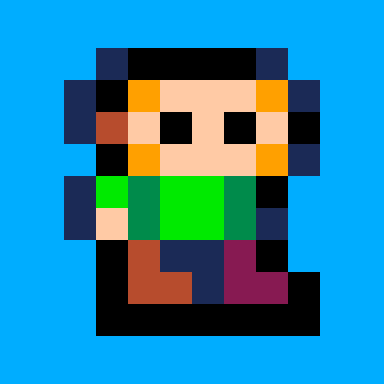

I've written some functions based on Dylan Bennet's tutorial "PICO-8 Top-Down Adventure Game Tutorial - Bonus Step - Text". I tried to adapt it to taking gold out of chests (I know the next video in the series partly covers that, but that solution assumes every chest in the game gives the same amount). Ideally they should output a certain number based on an x,y coordinate, which other functions could use.
'''
function set_chests()
chests={}
add_chest(7,3,9)
end
function add_chest(x,y,num)
chests[x+y*128]=num
end
function get_chest(x,y)
return chests[x+y*128]
end
'''
get_chest should return 9 when the coordinates (7,3) are put in, which could then be added to another variable. Instead touching the chest at (7,3) does this:
RUNTIME ERROR LINE 13 TAB 6
return values[x+y*128]
attempt to index global 'values' (a nil value)
I'm not in any rush to fix this, but the fact I have no idea why it's happening bothers me. Advice would be very appreciated.



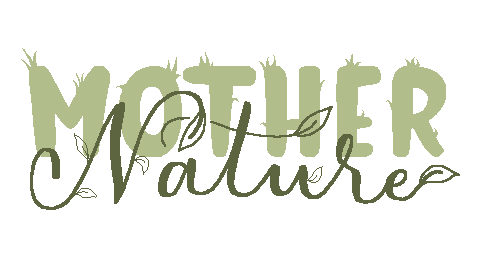
A game about Mother Nature defending her last tree from an army of sweaty lumberjacks who simply want some wood.
This game was made for 'My First Game Jam: Winter 2022', and is my second game that I've created for the Pico-8 console.
I cut (hehe) quite a few planned features to finish the game by the end of the game-jam, I might add these features in the future.
Please comment your high scores and any feedback you may have if possible. Much appreciated, enjoy.
Controls:
Z: Shoot
Arrow keys: Move



I'm trying to make a rhthm-based game, and although the timing looks OK both on pico-8 and in my computer after exported in HTML, when running it through my cellphone everything has ~300ms delay, which ruins the experience.
I've done a very simple cartridge to test the timing - Try to press X to follow the rhythm. Again, on my desktop computer it's fine, but when running it on a cellphone the timing is definetly off.
I've debugged a bit, trying to see if it's some lag added by the browser on cellphones to detect gestures, but the same function that sets the button as on is triggered as soon as it's pressed down. It looks like the delay happens in between the buttons JS variable and pico-8 runtime.
Is there an alternative way of getting input with close to no lag or it's just the browser export? Any way to fix it?
Bowser's Farm
This a reskin of "FARM PANIC" originally created by @NYLON_1919, with new graphics from the mario-universe. Have fun!
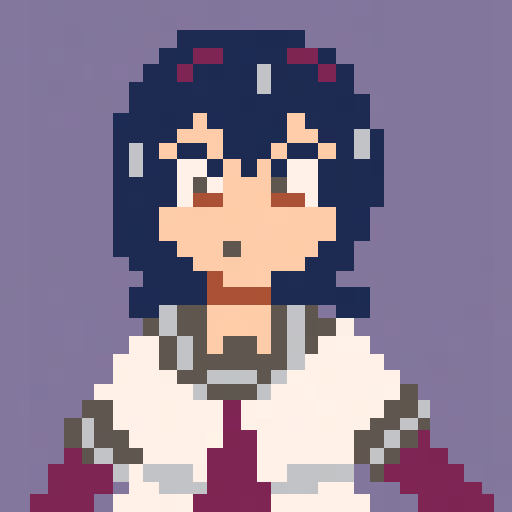

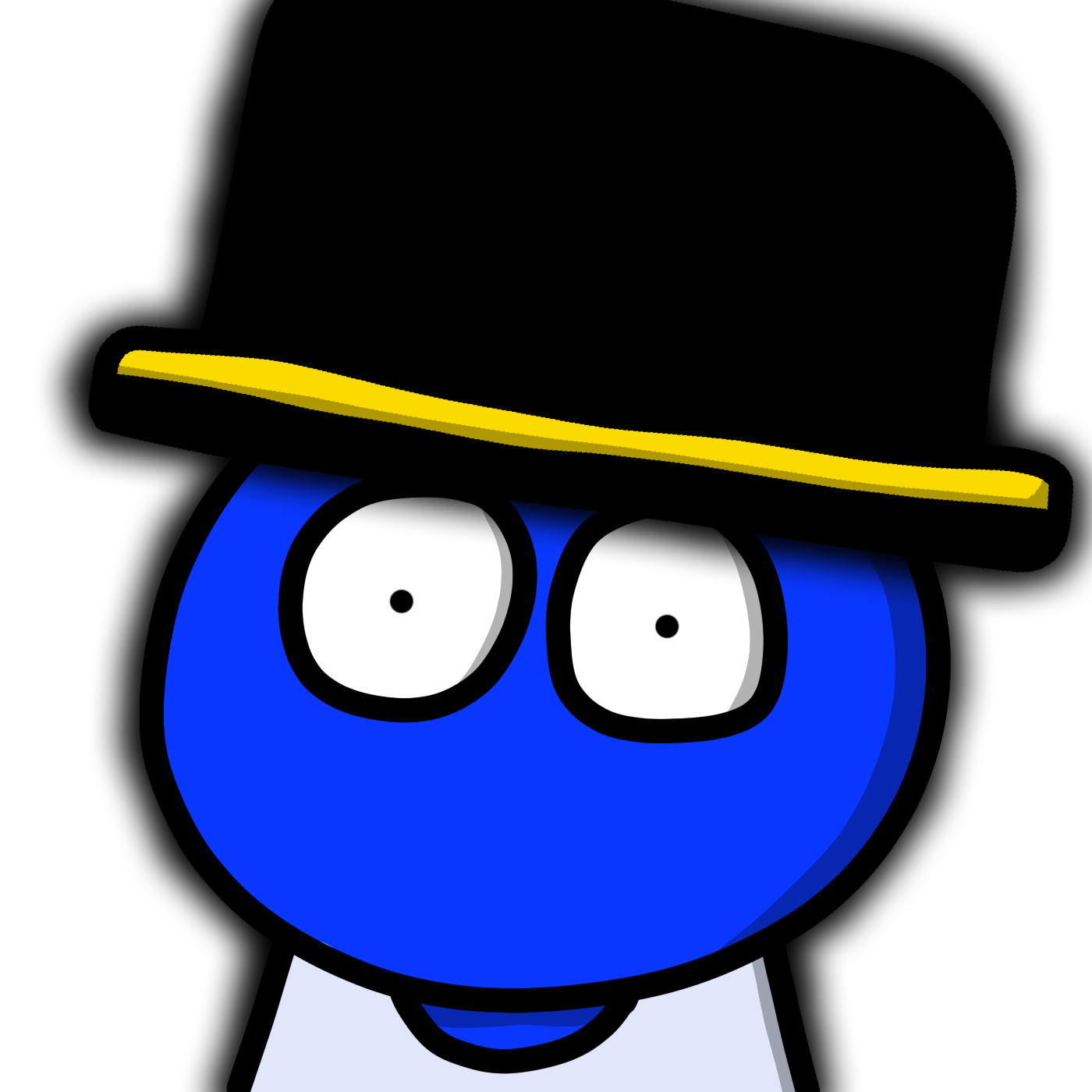
According to documentation
PRINT returns the right-most x position that occurred while printing
One can make a valid case that certain print control codes may result in unusual return values, but this one doesn't feel right to me.
x = print('\^iabcde')
print(x)
y = print('\^d2abcde')
print(y) |
results in

The speed of the print output shouldn't affect our ability to receive the final x position, IMHO.







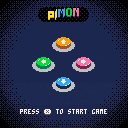
 3 comments
3 comments

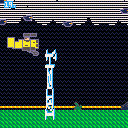


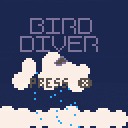
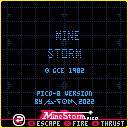


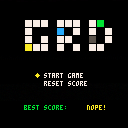
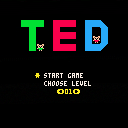



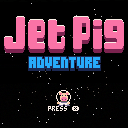
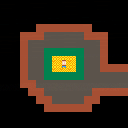
.gif)
